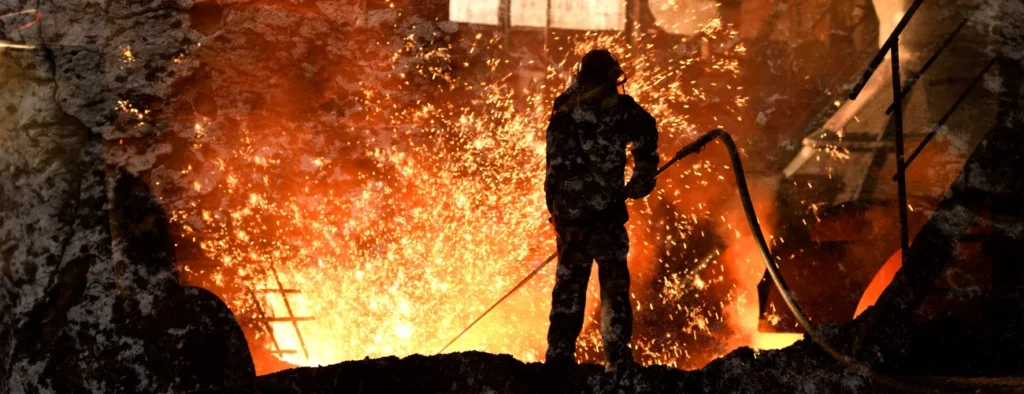10 Signs Your Furnace May Explode & How to Prevent Them
A furnace can potentially explode due to several reasons, although it’s important to note that modern furnaces are designed with numerous safety features to prevent such catastrophic events. Here are 10 Signs Your Furnace May Explode and Tips on How to Maintain it.

Ten Signs Your Furnace Is Going to Explode
1. Furnace Heater Is Not Switching On
If your furnace heater is not switching on, there are several common issues you can troubleshoot before calling a professional Furnace technician. Check the furnace power switch and make sure it’s turned on. This switch is typically located near the furnace or on a nearby wall. Inspect the circuit breaker panel to ensure that the breaker for the furnace has not tripped. Reset any tripped breakers by switching them fully off and then back on.
2. Furnace Smells
If your furnace emits a smell that is not related to gas or other potentially hazardous materials (like rotten eggs, burnt plastic, or sewer smells), there are several common odors and their possible causes that you might encounter. This is a cause for concern. Turn off the unit and contact an HVAC specialist to diagnose the problem
3. Furnace Pilot Light Is Discolored
If your furnace pilot light is discolored, it’s important to investigate the cause promptly. The color of the pilot light flame can provide clues about the combustion process and the overall condition of your furnace. A blue flame with yellow tips can indicate a possible presence of carbon monoxide (CO). A yellow or orange flame typically indicates incomplete combustion, which can be caused by a variety of issues such as:
- Dirty or clogged burner: Dust, dirt, or debris on the burner can interfere with the proper mixing of gas and air.
4. Carbon Monoxide Detector Tripped and Went Off
If your carbon monoxide (CO) detector specifically linked to your furnace has tripped and gone off, it indicates a potentially hazardous situation that requires immediate attention. If the CO detector connected to your furnace has gone off, evacuate all occupants from the building immediately. Move to fresh air outdoors, away from the building. Do not re-enter the building until it has been deemed safe by emergency responders or qualified professionals.
5. If Furnace Is Older
Regular maintenance is crucial for older furnaces to ensure they continue operating safely and efficiently. Schedule annual maintenance with a qualified HVAC technician. They can inspect the furnace, clean components, lubricate moving parts, and identify potential problems early.
6. Burner Flame Is Blue Instead of Yellow
If the burner flame on your furnace is blue instead of yellow, it’s generally considered a positive sign. A blue flame typically indicates that the fuel (natural gas or propane) is burning efficiently and completely. If your furnace burners are clean and free of dirt or debris, they are more likely to produce a clean, blue flame. A blue flame indicates that the fuel and air mixture is balanced, resulting in efficient combustion. This is ideal for both heating performance and energy efficiency.
7. High Electricity Bills with Furnace Usage
When your electricity bill is high while using a furnace, especially during the colder months when heating demand is highest, several factors related to furnace usage and energy consumption may contribute to the increase.
Common Reasons for High Electricity Bills with Furnace Usage:
- Older furnaces tend to be less energy-efficient compared to newer models. They may use more electricity or gas to generate heat.
Poor maintenance, such as dirty filters or malfunctioning components, can reduce furnace efficiency, leading to higher energy consumption
8. Furnace Is Not Working Properly or Producing Heat
If your furnace is not working properly or producing heat, especially during the colder months when heating is crucial, it can be concerning. Ensure the thermostat is set to “Heat” mode and the temperature setting is higher than the current room temperature. Check the circuit breaker panel to see if the breaker for the furnace has tripped. Reset it if necessary. If filters are dirty, replace them with new ones according to manufacturer recommendation
9. Constantly Adjusting Thermostat Settings
- If you find yourself constantly needing to adjust the thermostat settings, it could indicate several underlying issues with your heating system or home environment. If your heating system is undersized for the size of your home, it may struggle to maintain consistent temperatures, leading to frequent adjustments. Conversely, an oversized system may heat your home quickly but shut off before achieving even heating throughout the house, causing temperature fluctuations.
Regular Maintenance Tasks:
- Inspect and Replace Air Filters with a professional Technician
- Check Thermostat Operation
- Inspect and Clean Vents and Registers
- Inspect and Clean the Blower Motor and Assembly
- Check and Clean the Heat Exchanger
- Inspect and Lubricate Moving Parts
